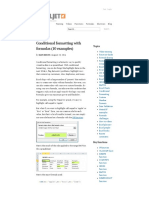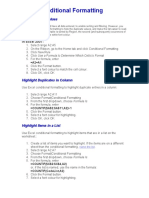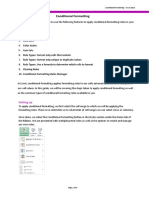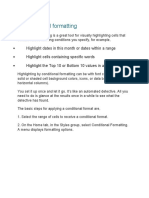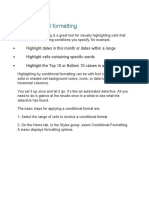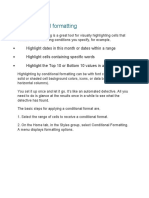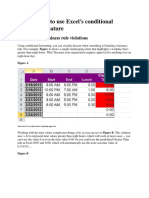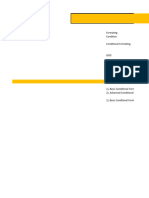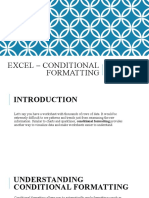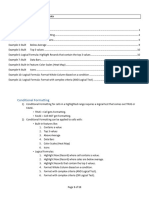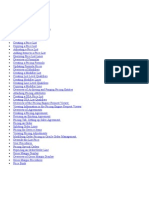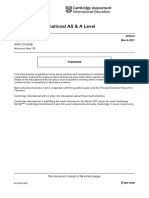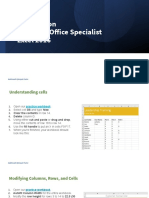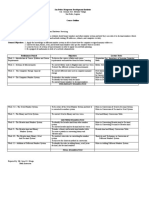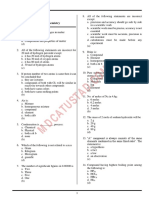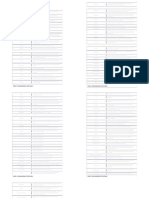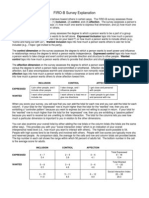0% found this document useful (0 votes)
15 views8 pages4.08 - Modifying Data Is Excel
The document provides a guide on using conditional formatting in Excel to highlight cells based on specific criteria, such as values greater than a certain number or above average. It includes step-by-step instructions for applying and clearing conditional formatting rules, as well as using formulas to customize formatting. Examples include highlighting odd numbers and specific text values, demonstrating how to apply formulas across selected ranges.
Uploaded by
voyeti3188Copyright
© © All Rights Reserved
We take content rights seriously. If you suspect this is your content, claim it here.
Available Formats
Download as PDF, TXT or read online on Scribd
0% found this document useful (0 votes)
15 views8 pages4.08 - Modifying Data Is Excel
The document provides a guide on using conditional formatting in Excel to highlight cells based on specific criteria, such as values greater than a certain number or above average. It includes step-by-step instructions for applying and clearing conditional formatting rules, as well as using formulas to customize formatting. Examples include highlighting odd numbers and specific text values, demonstrating how to apply formulas across selected ranges.
Uploaded by
voyeti3188Copyright
© © All Rights Reserved
We take content rights seriously. If you suspect this is your content, claim it here.
Available Formats
Download as PDF, TXT or read online on Scribd
/ 8













